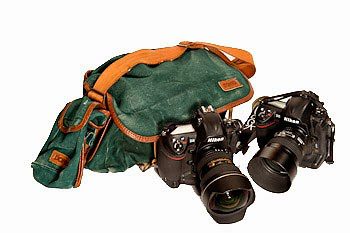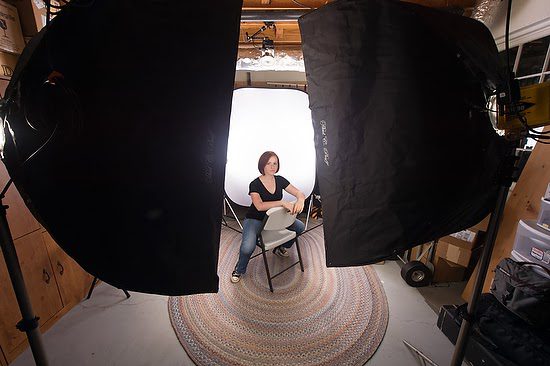| Fujifilm X-E2, 18-55mm, ISO 6400, ƒ/3.6, 1/300 |
The two primary purposes of a lighthouse are to serve as a navigational aid and to warn boats of dangerous areas. It is like a traffic sign on the sea.
When you are at sea and trying to find your port, having a lighthouse to help guide you will improve the success of locating your destination.
 |
| Nikon D4, 28-300mm, ISO 3200, ƒ/5.6, 1/8000 |
What can a photographer use as a lighthouse to help them navigate their career?
First, you must know what you want to do with your photography. Who has the job that you want to do? That is the best question to start with on your journey.
You may be like millions of photographers who want to work for National Geographic Magazine. The good thing about picking somewhere like this is you can meet those photographers. Most of them teach classes and workshops where you can pay to pick their brain.
I know this because I did just that in the 1980s. Then, I studied with Steve McCurry at the Maine Photographic Workshops in Rockport, Maine. Steve looked at everyone’s work in our class and would answer any of our questions during our week with him.
The best part was he told us about his career path. I quickly learned that one couldn’t just duplicate those paths taken by previous photographers. For example, he crossed over illegally into Afghanistan to get the lady’s photo on the cover of National Geographic Magazine. He sent his Kodachrome film to his sister, a school teacher, to send on to the magazine. Before this, he worked at a small newspaper for a few years.
During my time with Steve McCurry and other photographers like Don Rutledge, I soon learned there were things I needed to master to move my career along a path to success.
List of things one must master
- Master your Camera
- Master digital workflow
- Master Visual Composition
- Master Lighting
- Become an “EXPERT” in your subject
- Know your audience
- Create “UNIQUE” images
Master your Camera—This takes a while to be indeed able to pick up your camera and make it do what you want it to do for you. Mastering is the same as one who will be able to sit down at a concert piano and play whatever music there is to play. I found with most photographers; this will take around five years.
Master Digital Workflow—This is everything that comes after capturing the image for the client. We often refer to this as post-processing. During post-processing, you understand the color space you are working in and what color space you are delivering your images for usage. Post is where you can take the well-exposed pictures you captured and then maximize the dynamic range for the outlet.
Master Visual Composition—This is where you can capture moments that communicate the mood and message you intended to capture.
Master Lighting—First, you must recognize good light and be able to capture it. Mastering light is where you are putting yourself in the position to capture the best images of a subject. For example, you are planning your shoot to take advantage of the natural daylight that will show off the issue in the best possible way to capture the mood and message you wanted. Second, you know how to use artificial light to enhance the scene to create those moods and messaging the way you intended, not just how it looks.
Become an “EXPERT” on the Subject—This is the most crucial aspect on the list that can help set you apart from any other photographer. I went on to seminary to get an advanced degree in my subject matter to help me separate my knowledge of religion from that of many of my other photographer friends who enjoyed covering religion. In addition, after following and working at Georgia Tech for more than ten years, I knew the campus better than anyone. My experience helped me for covering sports, the classroom, and research.
Know Your Audience—In business, we talk about SUPPLY and DEMAND. While you may have a lot of great images, the thing that will determine you are putting food on the table and a roof over your head is DEMAND. What is your audience interested in about the subject? Just like a good writer knows their audience’s reading level, so their writing for that audience, a photographer must understand enough about the audience to know how to engage them. Going off to war and photographing the grotesque can be a significant mistake. You may need to filter how you cover the battle to prevent your audience from viewing the images.
Create “UNIQUE” images—If the people you are going to approach to buy your work could have shot the same idea, what good are you to them? You need to surprise them in some way with images that they would not have taken themselves. Maybe the only difference is how you light something, and sometimes it may be a pretty elaborate remote camera that lets you get a photo that is impossible without the special gear. Remember to supply images that not everyone could easily do if they were there.
The reality is that it takes quite a bit more than talent alone. Talent is only a tiny part of the equation. Tenacity, the ability to handle severe rejection, perseverance, and a good team get you to the next level.
It would help if you had others look at your work and help give you honest feedback.
When it comes to a successful career, other things for consideration: are your look, attitude, personality, style of photography, fan base, tear sheets, that specific intangible X factor, and most importantly, that undeniable outstanding portfolio.
People say that “practice makes perfect,” but in reality, that statement is incorrect — it should state that “perfect practice makes perfect.” Perfect practice is a form of rehearsal during which you remain cognizant and analyze what you are doing. For instance, are you delving into bad habits?
The more intentional you are in acquiring the skills necessary to capture the subject you are becoming an expert in will help set you up to have a lifelong career as a professional photographer possibly. Of course, it would help if you committed to pouring your life into this career.





